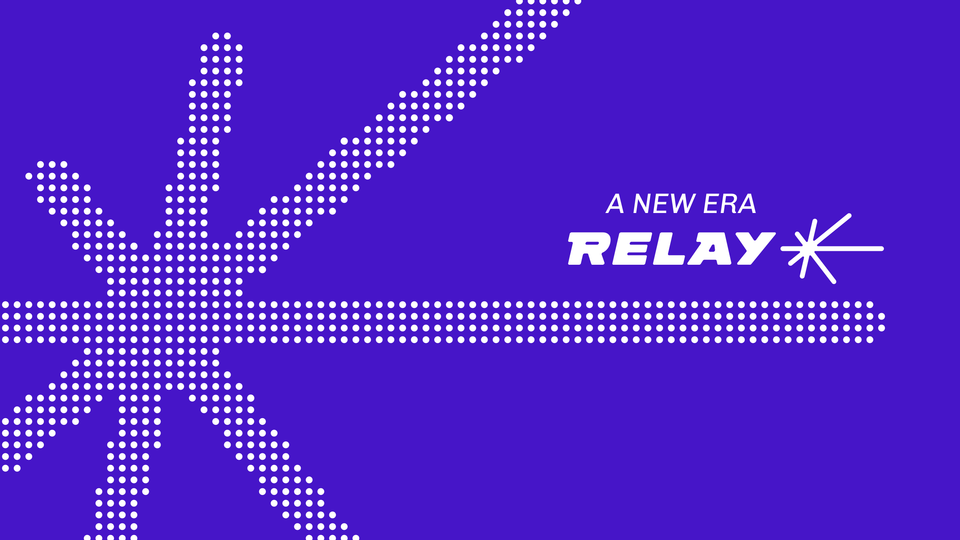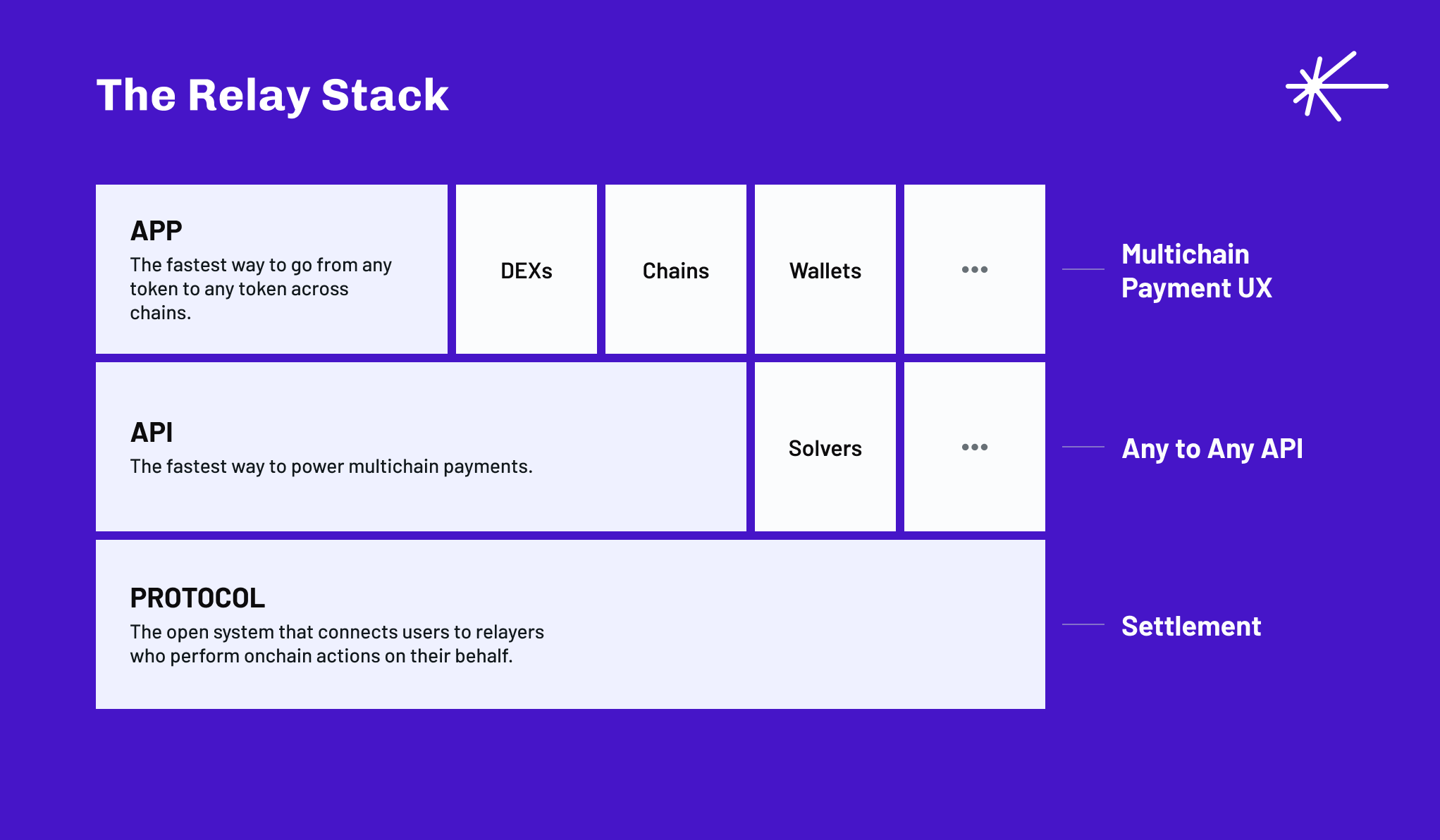Relay 2.0 — Introducing A New Era of Multichain Payments

Today isn’t just a product update.
It's the launch of a new brand and the beginning of a new chapter.
We're unveiling a sharper identity, refreshed visuals, and a clearer mission that reflects what we've been building all along.
Why Now
Over the past year, our team has been heads-down building one of the most used products in crypto. Relay began as a humble side project to power Zora's crosschain NFT minting.
Since then, it has grown to serve over 5M users, process 55M+ transactions, and move $6B+ in volume across 75+ networks.
Through that explosive growth, we realized something crucial: our look and message needed to reflect what we are truly building.
The space doesn’t just need a better way to bridge tokens. It needs a way to move value anywhere, instantly with the kind of reliability people expect from modern payments.
The Shift We’re Seeing
Two unstoppable forces are reshaping crypto:
1. Crypto is becoming massively multichain.
Robinhood is rolling out its own L2. Stripe and Paradigm are backing a brand-new L1. Banks and corporations are racing to launch stablecoins. And meanwhile, ecosystems like Ethereum, Solana, and Cosmos continue to expand.
With over 1,000 active chains, the future of crypto isn’t consolidation — it’s an explosion of networks and assets. Expansion is inevitable. The question is whether the experience keeps pace.
2. Mass adoption requires invisible UX.
The average person will never manually bridge funds, calculate gas fees across networks, or wait 20 minutes for confirmations. If it’s harder than Venmo, we lose.
These forces create impossible tension. Solving it requires a payments-first approach to interoperability, where moving across chains feels no more complex than swiping a card.
We're pioneering the term "multichain payments" to describe this unified system for transacting across chains as the primary way of using crypto—with no friction, no chain switching, and no technical guesswork.
Our mission is clear:
Make transacting across chains as fast, cheap, and simple as online payments.
What are Multichain Payments?
Multichain payments is how Relay makes value usable anywhere, instantly and reliably. It is built for a world where value shifts fluidly across chains, no longer isolated to a single ecosystem, and transactions feel as effortless as simply tapping to pay.
As Fast as Possible
Speed is not just a UX win, it is a reliability win. The faster a payment settles, the less room there is for:
- Price changes
- Liquidity reduction
- Transactions failing due to network shifts
With Relay, execution is measured in milliseconds, not minutes.
Payments-Grade Reliability
When you use a credit card, you don’t wonder if it will go through. It just works. We want that same confidence here
- 99.9% uptime across 75+ networks
- Failover systems that ensure execution if the primary path breaks
- Clear, predictable completion signals for apps and users
These capabilities come to life across our full product stack.
Delivering On Our Mission
Relay is built as a complete stack, with solutions for every layer of the multichain payments experience:

Relay App — Our Flagship App
The fastest way to go from any token to any token across chains. Available to everyone, built on the same infrastructure that powers our partners.
Relay API — For Developers
The fastest way to power multichain payments. With one integration, apps can:
- Bridge instantly between 75+ chains with low, predictable fees.
- Swap seamlessly using meta-aggregation across all major DEXs for the best price and deepest liquidity.
- Deliver payments-grade UX with features like fee and gas sponsorship, gasless transactions, guaranteed rates, SLAs, and fallback routing.
The Relay API abstracts the complexity of chains and liquidity so developers can focus on building experiences. Whether you’re building a wallet, marketplace, or consumer app, Relay makes crosschain payments fast, invisible, and reliable.
Relay Protocol — The Network
The network is an open system that connects users to relayers who perform onchain actions on their behalf. It's built to enable low gas costs, rapid chain expansion, and maximum capital efficiency.
Multichain Payments in Action
This isn’t just a vision — it’s already happening at scale. Relay powers 5M+ users, $5B+ in total volume, and 50M+ transactions since launching last year. On Ethereum alone, Relay routes an average of 3 transactions every block, representing nearly 0.7% of all network activity.
We deliver this impact in two core ways:
Chain Expansion
Helping ecosystems and apps grow seamlessly across the explosion of new L1s and L2s.
- Alchemy, Conduit, and Caldera rely on Relay to provide payment rails to every rollup out of the box.
- Fun.xyz integrates Relay to simplify first transactions so onboarding flows don’t break at the chain boundary.
Chain Abstraction
Making multichain invisible for users at scale.
- OpenSea powers crosschain mints and swaps through Relay, so collectors mint NFTs without worrying what chain they’re on.
- Phantom collapses complex swaps into one seamless flow.
- OneBalance routes execution through Relay, letting users access opportunities across chains as easily as checking their balance.
Relay isn’t preparing for the multichain explosion. we’re already the transaction fabric that makes it usable.
What’s Next
Relay 2.0 is about scaling this vision to the edges of crypto. Our goal is simple: every payment in crypto should be a multichain payment — and Relay will power them all.
This evolution starts with Relay Vaults and continues with the rollout of the Relay Protocol, giving developers the building blocks for instant, low-cost payments across every chain, wallet, and app.
The multichain era does not wait for perfect conditions. It begins when the right technology meets the right moment. That moment is now.
Fast. Reliable. Everywhere.
Ready to experience instant multichain payments?
Building something? Learn more about integrating the API in our docs or reach out below.
Follow our journey on X as we build the payments system for the multichain era.
